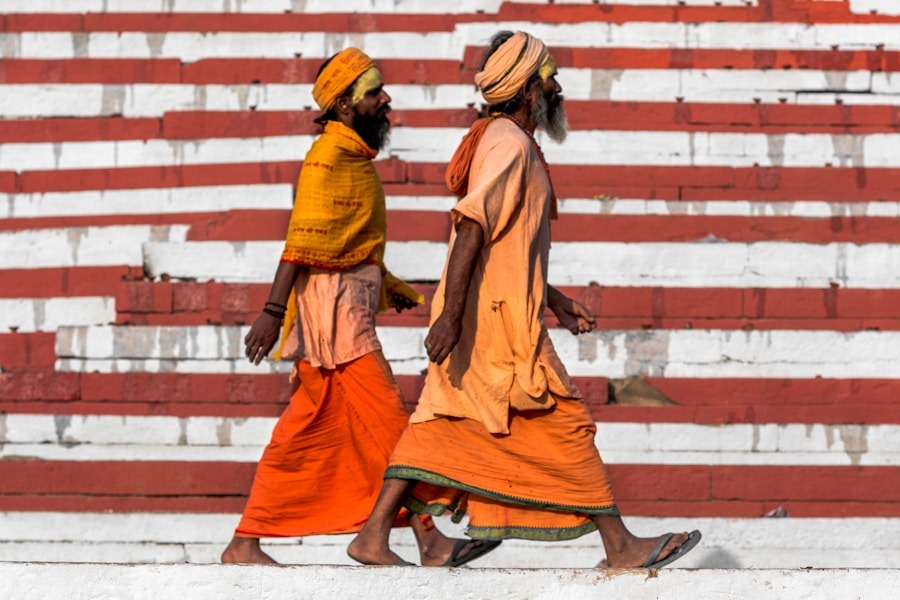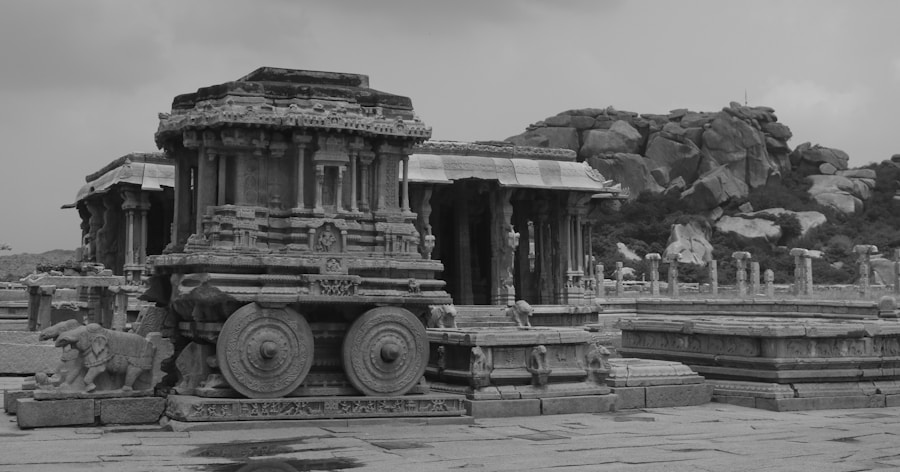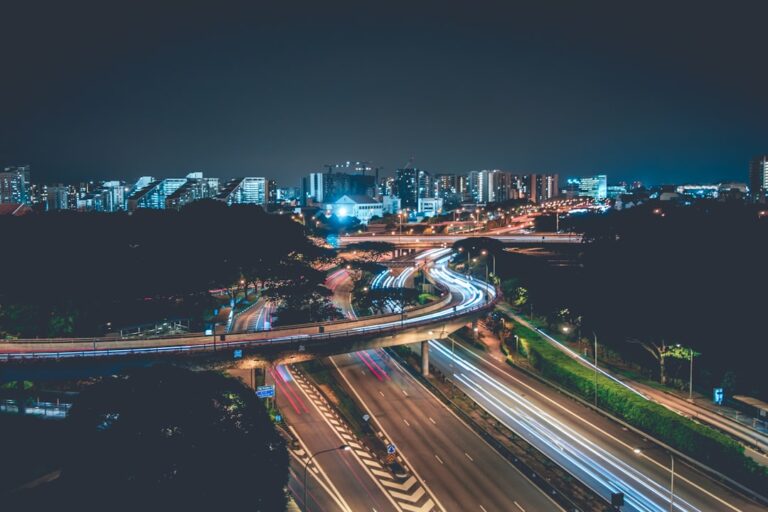The urban centers of ancient India, particularly during the Vedic and Post-Vedic periods, represent a fascinating chapter in the history of civilization. These urban settlements were not merely geographical locations; they were vibrant hubs of culture, trade, and social interaction that played a pivotal role in shaping the socio-economic landscape of the time. The Vedic period, which is generally dated from around 1500 BCE to 500 BCE, is characterized by the emergence of early urbanization, while the Post-Vedic period, extending from approximately 500 BCE to 200 CE, witnessed significant transformations in urban life, influenced by various socio-political and economic factors.
The significance of these urban centers extends beyond their physical structures; they were the crucibles of cultural exchange and innovation. The Vedic texts, which include the Rigveda, Samaveda, Yajurveda, and Atharvaveda, provide insights into the early societal organization and the nascent urbanization process. In contrast, the Post-Vedic period saw the rise of more complex urban centers, influenced by trade routes, political changes, and cultural interactions with neighboring regions.
Understanding these urban centers offers a window into the lives of people during these periods and highlights the continuity and change in Indian civilization.
Key Takeaways
- Urban centers in Vedic and Post-Vedic periods played a significant role in the development of ancient Indian civilization.
- The Vedic period saw the emergence of early urban centers such as Harappa and Mohenjo-Daro, which were characterized by advanced urban planning and infrastructure.
- The Post-Vedic period witnessed the evolution of urban centers with the establishment of trade routes, administrative centers, and religious institutions.
- Factors such as trade, agriculture, and political power influenced the growth of urban centers in both Vedic and Post-Vedic periods.
- Urban centers in Vedic and Post-Vedic periods were hubs of social and economic activities, fostering cultural exchange, trade, and specialized craftsmanship. Their legacy continues to influence modern Indian society.
The Development of Urban Centers in Vedic Period
The Vedic period marked a significant transition from nomadic pastoralism to settled agricultural communities. This shift laid the groundwork for the development of urban centers. The early Vedic society was primarily tribal and pastoral, with communities organized around clans and kinship ties.
However, as agriculture became more prominent, particularly with the cultivation of rice and barley in the fertile plains of the Ganges and Yamuna rivers, permanent settlements began to emerge. These settlements gradually evolved into urban centers characterized by increased population density and social stratification. Archaeological evidence from sites such as Hastinapura and Kuru suggests that these early urban centers were strategically located near water sources and fertile land, facilitating agricultural production and trade.
The presence of granaries, pottery, and tools indicates a burgeoning economy that supported a growing population. Additionally, the emergence of specialized crafts and trades contributed to the complexity of these urban centers. Artisans began to produce goods such as textiles, metalwork, and pottery, which were essential for both local consumption and trade with neighboring regions.
The social structure during this period was also evolving. The Vedic texts reflect a society that was beginning to stratify into distinct classes or varnas: the Brahmins (priests), Kshatriyas (warriors), Vaishyas (traders), and Shudras (laborers). This division of labor was crucial for the functioning of urban centers, as it allowed for specialization and efficiency in various economic activities.
The emergence of these classes also indicated a shift towards more complex social hierarchies, which would further influence the development of urban life in subsequent periods.
The Evolution of Urban Centers in Post-Vedic Period

The Post-Vedic period heralded a new era in the evolution of urban centers in India. This period saw the rise of powerful kingdoms and empires that played a crucial role in shaping urbanization. The emergence of Mahajanapadas—large territorial states—around the 6th century BCE marked a significant turning point.
These states were characterized by fortified cities that served as administrative and economic hubs. Notable examples include Pataliputra (modern-day Patna), Vaishali, and Ujjain, which became prominent centers of trade and governance. The growth of trade routes during this period significantly contributed to urban development.
The expansion of commerce facilitated interactions between different regions, leading to cultural exchanges that enriched urban life. The establishment of trade networks connecting India with Central Asia, Persia, and beyond resulted in an influx of goods, ideas, and technologies. Urban centers became melting pots where diverse cultures converged, fostering an environment ripe for innovation in art, architecture, and philosophy.
Moreover, the Post-Vedic period witnessed advancements in urban planning and architecture. Cities were often designed with a grid layout, featuring wide streets, public spaces, and drainage systems—an indication of sophisticated urban planning.
These architectural marvels served as focal points for community life and were integral to the identity of these urban centers.
Factors Influencing the Growth of Urban Centers
Several interrelated factors contributed to the growth of urban centers during both the Vedic and Post-Vedic periods. One primary factor was agricultural productivity. The introduction of iron tools around 1000 BCE significantly enhanced agricultural efficiency, allowing for surplus production.
This surplus was crucial for supporting larger populations in urban areas and facilitated trade with surrounding regions. As agricultural practices improved, communities could sustain themselves better, leading to increased stability and growth. Another significant factor was trade.
The establishment of trade routes not only facilitated economic exchanges but also encouraged cultural interactions between different regions. Urban centers often emerged at strategic locations along these routes, serving as marketplaces where goods from various parts of India and beyond were exchanged. The flourishing trade networks contributed to the wealth of these cities, attracting merchants and artisans who sought opportunities for economic advancement.
Political stability also played a vital role in urban growth. The rise of powerful kingdoms during the Post-Vedic period provided a conducive environment for urbanization. Strong centralized governance allowed for better administration and infrastructure development within cities.
Rulers invested in public works such as roads, irrigation systems, and marketplaces to enhance trade and improve living conditions for their subjects. This investment not only stimulated economic activity but also reinforced the authority of the ruling class.
Social and Economic Life in Urban Centers
Life in urban centers during the Vedic and Post-Vedic periods was characterized by a dynamic interplay between social structures and economic activities. The stratification observed in society influenced daily life significantly. In urban areas, one could find a diverse population comprising various social classes engaged in different occupations.
The Brahmins held religious authority and often served as advisors to rulers; Kshatriyas were involved in governance and military affairs; Vaishyas engaged in trade; while Shudras provided labor for various crafts and services. Economic activities were diverse and vibrant within these urban centers. Markets thrived as merchants traded goods ranging from textiles to spices, metals to pottery.
The presence of guilds—associations of artisans or traders—further organized economic life by regulating prices, maintaining quality standards, and providing mutual support among members. These guilds played a crucial role in fostering economic cooperation and ensuring that skilled artisans could thrive within their respective trades. Cultural life flourished alongside economic activities in these urban centers.
Temples served not only as religious sites but also as community gathering places where festivals were celebrated with great fervor. Artisans produced intricate sculptures and paintings that adorned these temples, reflecting both religious devotion and artistic expression. Literature flourished as well; poets and scholars contributed to an intellectual milieu that encouraged philosophical discourse and artistic creativity.
Legacy of Urban Centers in Vedic and Post-Vedic Periods

Enduring Trade Networks
One significant aspect of this legacy is the continuity of trade networks that began during these early periods. The routes established for commerce continued to evolve over time, facilitating exchanges not only within India but also with distant lands such as Rome, China, and Southeast Asia. This interconnectedness contributed to India’s rich tapestry of cultural diversity and economic prosperity throughout history.
Architectural Innovations
The architectural innovations seen in urban centers during these periods set precedents for future city planning in India. The principles of urban design—such as grid layouts, public spaces, and drainage systems—were refined over time but can be traced back to these early settlements. The emphasis on monumental architecture also influenced subsequent dynasties that sought to leave their mark through grand structures.
Lasting Impact on Indian Society
In conclusion, the urban centers that emerged during the Vedic and Post-Vedic periods were instrumental in shaping not only their contemporary societies but also future generations. They served as catalysts for economic growth, cultural exchange, and social organization that would resonate throughout Indian history. Understanding their development provides valuable insights into the complexities of ancient Indian civilization and its enduring impact on modern society.
If you are interested in the evolution of urban centers and their structural development, you may also find The Comprehensive Guide to Becoming a Structural Engineer to be a valuable resource.
Understanding the principles of structural engineering can provide insight into how ancient urban centers were built and how they have evolved over time.
FAQs
What were urban centers like in the Vedic period?
During the Vedic period, urban centers were characterized by small, fortified settlements with a central marketplace and religious structures. These centers were primarily focused on agriculture and trade.
How did urban centers evolve in the post-Vedic period?
In the post-Vedic period, urban centers began to grow in size and complexity. They became more organized and developed into cities with distinct social and economic structures. Trade and commerce flourished, and urban planning became more sophisticated.
What were the key features of urban centers in the post-Vedic period?
Urban centers in the post-Vedic period were characterized by well-planned layouts, advanced infrastructure, and specialized craft production. They also had administrative and political institutions, as well as a stratified social hierarchy.
What role did urban centers play in the Vedic and post-Vedic societies?
Urban centers were important hubs for economic, political, and cultural activities in both the Vedic and post-Vedic periods. They served as centers of trade, governance, and religious practices, and played a crucial role in the development of early Indian civilization.






















+ There are no comments
Add yours